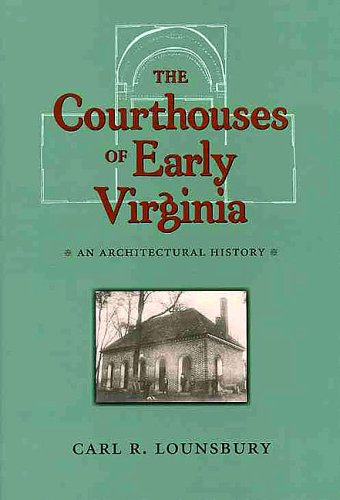Colonial Williamsburg Studies in Chesapeake History & Culture
1 total work
Court day in early Virginia transformed crossroads towns into forums for citizens of all social classes to transact a variety of business, from legal cases heard before the county magistrates to horse races, ballgames, and the sale and barter of produce, clothing, food, and drink. As marketplace, playing field, social center, and administrative and judicial county seat, the courthouse grounds gave rise to an array of public and private buildings. The Courthouses of Early Virginia is the first comprehensive history of the public buildings that formed the nucleus of this space and the important private buildings that grew up around them. Carl R. Lounsbury surveys the architectural history of these buildings, from their undifferentiated forms in 1650 to 1800, when they had developed into specialized structures that reflected the growth of a wealthy agricultural society built on slave labor. After setting the context of legal and social affairs that conditioned the design, construction, and function of county government building, he examines the example of Yorktown. He then proceeds with a thematic exploration of issues including the rise of courthouses of greater civic aspiration and aesthetic ambition, the public building process, altitudes toward punishment and prisons, and the role of taverns and clerk's offices in the legal process. He concludes with a discussion of the evolution of the courthouse grounds into the broader civic squares that characterized many Virginia cities and towns by the early nineteenth century. With abundant drawings, photographs, and maps and a checklist of important public buildings in early Virginia, Lounsbury's study will fascinate and delight architectural historians, architects, students, and Virginias involved in law and government.
